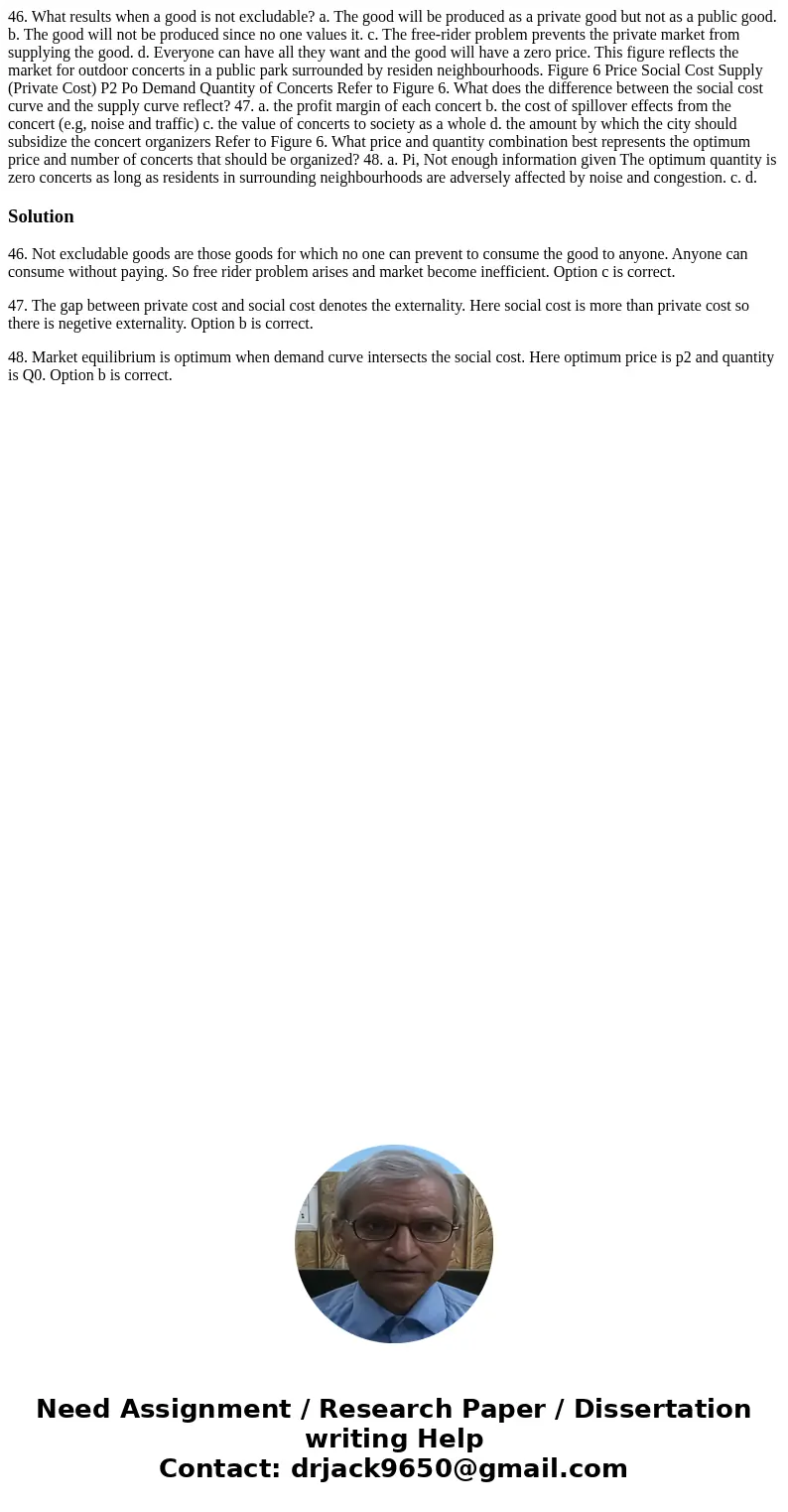46 What results when a good is not excludable a The good wil
46. What results when a good is not excludable? a. The good will be produced as a private good but not as a public good. b. The good will not be produced since no one values it. c. The free-rider problem prevents the private market from supplying the good. d. Everyone can have all they want and the good will have a zero price. This figure reflects the market for outdoor concerts in a public park surrounded by residen neighbourhoods. Figure 6 Price Social Cost Supply (Private Cost) P2 Po Demand Quantity of Concerts Refer to Figure 6. What does the difference between the social cost curve and the supply curve reflect? 47. a. the profit margin of each concert b. the cost of spillover effects from the concert (e.g, noise and traffic) c. the value of concerts to society as a whole d. the amount by which the city should subsidize the concert organizers Refer to Figure 6. What price and quantity combination best represents the optimum price and number of concerts that should be organized? 48. a. Pi, Not enough information given The optimum quantity is zero concerts as long as residents in surrounding neighbourhoods are adversely affected by noise and congestion. c. d. 
Solution
46. Not excludable goods are those goods for which no one can prevent to consume the good to anyone. Anyone can consume without paying. So free rider problem arises and market become inefficient. Option c is correct.
47. The gap between private cost and social cost denotes the externality. Here social cost is more than private cost so there is negetive externality. Option b is correct.
48. Market equilibrium is optimum when demand curve intersects the social cost. Here optimum price is p2 and quantity is Q0. Option b is correct.

 Homework Sourse
Homework Sourse